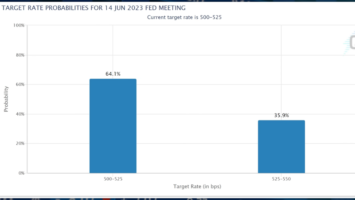Robinhood, the popular commission-free trading app, has been making waves in the financial world with its recent announcement of an Initial Public Offering (IPO). As one of the most anticipated IPOs of the year, investors are eagerly looking for essential details to make informed decisions. In this article, we will take a closer look at Robinhood’s IPO and provide key insights and information that investors should consider.

Robinhood’s IPO: A Closer Look at the Essentials
Robinhood, founded in 2013, has revolutionized the way millions of retail investors trade stocks and other financial instruments. The company has gained immense popularity by offering commission-free trades, user-friendly mobile apps, and democratizing access to the stock market. With its IPO, Robinhood aims to raise capital to fund further expansion and diversification of its services.
One crucial aspect to understand about Robinhood’s IPO is the company’s unique approach to allocation. Robinhood will reserve a significant portion of its shares for its own customers, allowing them to participate in the IPO process. This approach, known as the Directed Share Program, is relatively uncommon in traditional IPOs and can potentially create a strong sense of loyalty among its user base.
Key Insights and Information for Investors
Revenue Model and Potential Growth: As an investor, it is essential to assess Robinhood’s revenue model and its potential for future growth. While the platform offers commission-free trades, the company generates revenue primarily from payment for order flow (PFOF), which involves routing trades to market makers for execution. Understanding the sustainability and scalability of this revenue model will provide valuable insights into the company’s long-term financial prospects.
Regulatory Concerns and Market Risks: Investors should also closely evaluate the regulatory landscape surrounding Robinhood. The company has faced scrutiny and regulatory fines in the past, highlighting potential risks associated with its business model. Additionally, market factors such as increased competition from traditional brokerages and potential changes in investor behavior could impact Robinhood’s future growth trajectory.
User Acquisition and Retention: Robinhood’s success heavily depends on its ability to acquire and retain users. Investors should evaluate the company’s user acquisition strategies, as well as its ability to retain a loyal customer base. With a significant portion of its IPO shares reserved for customers, Robinhood aims to create a unique relationship and loyalty with its users. Understanding the company’s plans for user growth and retention will be crucial for assessing its long-term profitability.
As Robinhood’s IPO approaches, investors must carefully consider the essential details surrounding the company. Understanding Robinhood’s unique approach to IPO allocation, revenue model, regulatory concerns, and user acquisition strategies will provide valuable insights for potential investors. By thoroughly analyzing these key aspects, investors can make informed decisions regarding their participation in Robinhood’s IPO.
Ainu Token aims to offer impartial and trustworthy information on cryptocurrency, finance, trading, and shares. However, we don't provide financial advice and recommend users to conduct their own studies and thorough checks.



Comments (No)